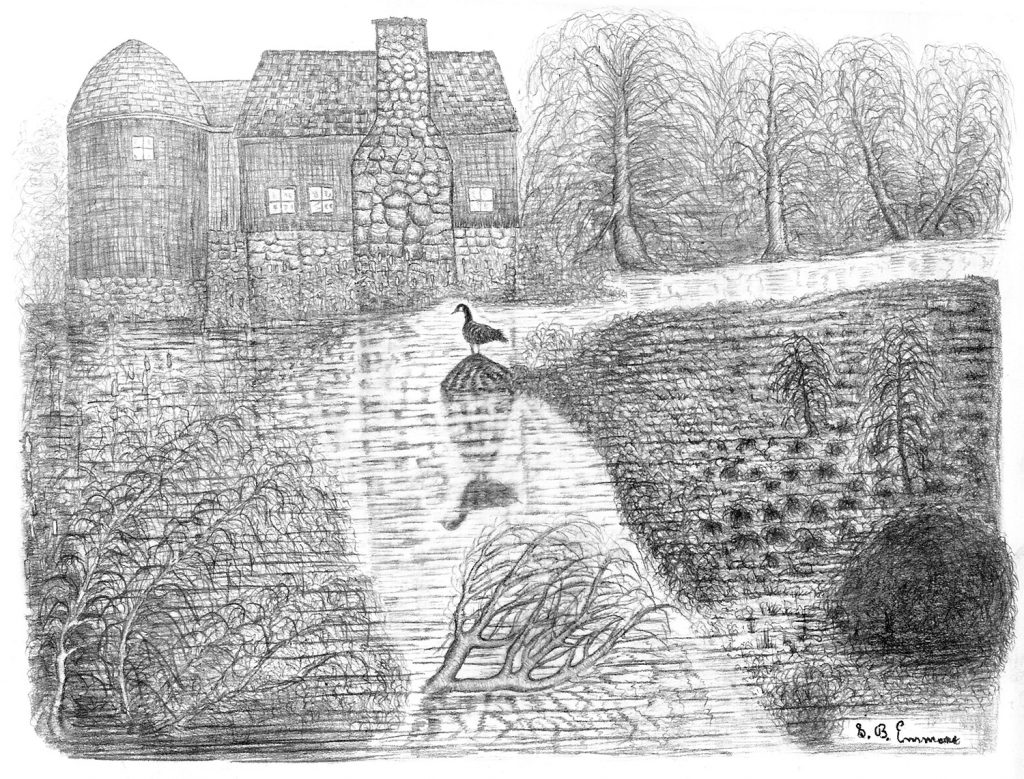The Canada goose was not a regular part of the winter landscape fifty years ago in 1969 when I wrote my very first wildlife article for the Ridgefield, Connecticut publication just around the corner from our house. I wrote the article before today’s public awareness of global warming when geese were still migrating south, for one thousand miles or more in winter. My article was about the spring return of a single gander to the previous year’s nesting site without his mate. Somehow and somewhere along the long perilous journey, they had become separated. He seemed to be hopefully waiting for her to return by the side of a picturesque old gristmill pond, as illustrated.
The ordeal of arduous migration is no longer such a hazard today because many geese have adapted to an expanded temperate year-round zone of warming climate. Here they can be said to be very residual inhabitants, spending the entire winter along the Buzzards Bay coastline. At our present home on the bay, they will soon be nesting to raise four or more goslings at the water’s edge. We enjoy watching, as they lead their recently hatched young onto our back lawn to eat grass. Each one is noted to be able to devour up to seventy blades in a single hour. From such a persistent and gluttonous harvesting, and leaving such a subsequent mess behind, geese have become a seeming residual invasive species at town beaches, parks, and playing fields. However, we are somewhat fortunate that many of their numbers still seasonally migrate to traverse their traditional routes.
These flocks can sometimes be identified in long ‘V’ and ‘W’ formations with identified lines of even space among each other. They hold their place with relatively little movement between members. All follow the wind breaking leaders to the echo of his bugle call, up and down the line, until orchestration gradually fades into a more distant artic destination.
It is often said that Canada geese are one of the species that mate for life, another avian example of Mother Nature’s distinguished designation of fidelity and dedication. They become lifelong partners, as pairs have formed and exhibited a devoted teamwork of tireless togetherness for nesting, feeding, and raising offspring. With highly visible parental anxiety, either parent will risk their own life to distract a predator way from the young.
One day on my regular afternoon walk around the old millpond, the gander was gone and no longer a lonely sentinel of avian fidelity. Perhaps he had been called up by a traditional migration passing high overhead. If he may have answered their call to traverse out of the past and into the future, it came on with a strong momentum of our revolving planet in space. Today they once again augur for the regeneration of another spring. For all of us as writers and readers, it is about to come!
By George B. Emmons
